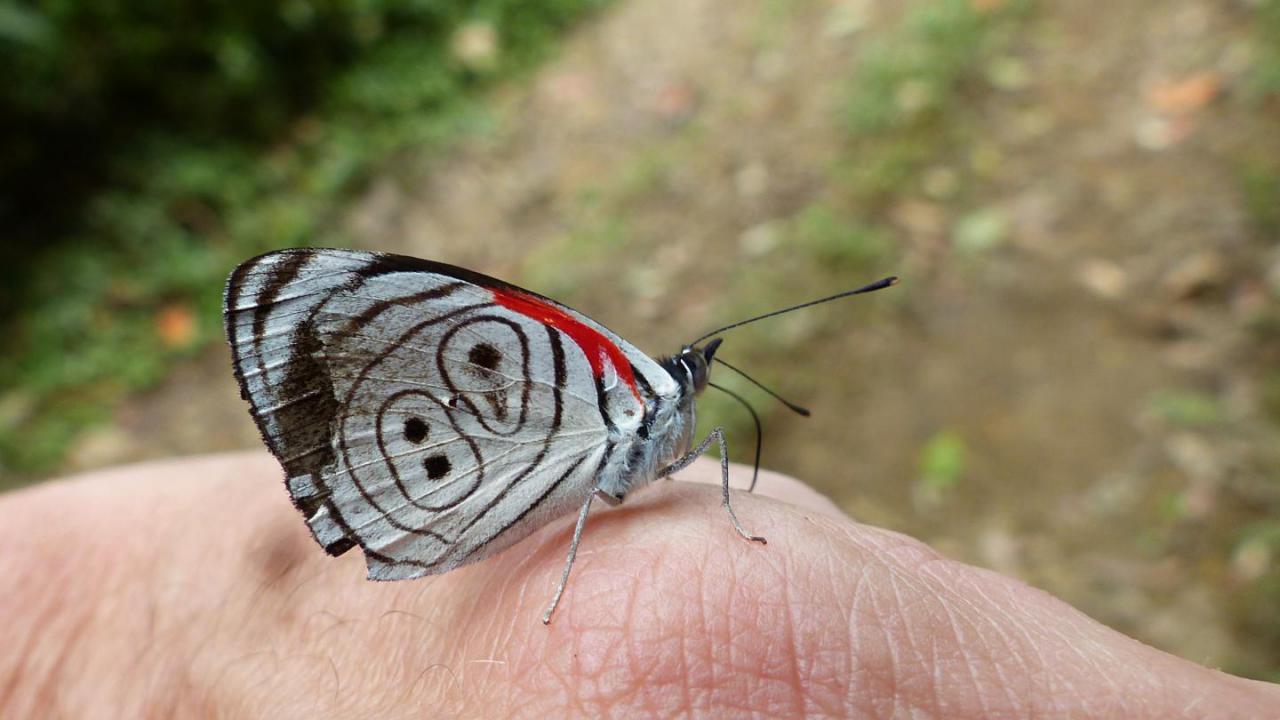Description:
The genus Diaethria is confined to Central and South America; 3 species are found in Mexico while the remainder are widely distributed across the Amazon and the Andes.
The 89 or 88 numerals which appear on the underside of the hindwings are present in all 12 of the Diaethria species but vary in colour, thickness and shape.
Very similar looking species in the genus Diaethria occurring in Colombia are D. neglecta, D. clymena, D. euclides, D. nystographa and D. gabaza.
All of these are quite difficult to tell apart, since they are usually sitting with their wings closed and the underside of all of them look very similar.
In Diaethria clymena the lines are usually quite thick, and the markings often form an '88' figure, while in others such as Diaethria neglecta and Diaethria euclides they are thin and form an '89'.
Usually the habitat differs between the species but D. Clymena and D. neglecta coexist in the same habitat.
Looking at the upperside of the forewings, D. neglecta has a white area at the base of the forewing, the red covers only half of the forewing and is edged towards the tip with a broad black band and the tip of the forewing is white with two narrow black bands.
D. clymena doesn't have the white basal spots, shows much more red (2/3 of the forewing), the black band is narrow and the tip is black with a narrow white band.
Diaethria euclides can be recognised by the red edging to the under-side costa, which extends only as far as the innermost of the black submarginal lines.
In most other species e.g. D. neglecta, D. clymena and D. gabaza, it reaches the outermost line.
In some examples of D. euclides the '9' numeral is confluent with the innermost line.
D. gabaza shows on the underside of the hindwing an extra red mark at the middle black line near the edge of the hindwing.
Montezuma Lodge area, Parque Nacional Tatamá, Risaraldas, Colombia, 28 June 2015



